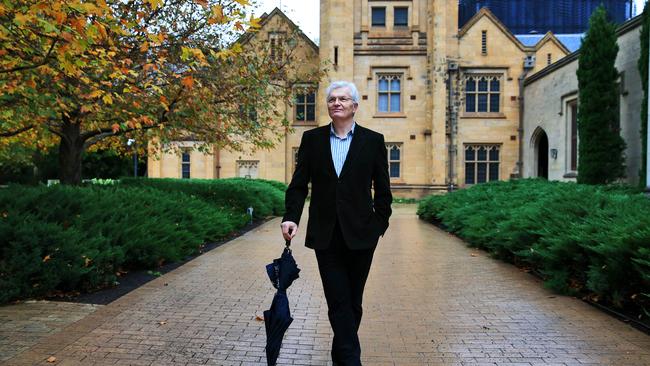Universities pay the price of being cut off from their communities

“There are no votes in higher education,” claimed Glyn Davis in his 2010 Boyer Lectures.
This is because Australian universities command as much public affection and exhibit as much personality as local councils.
That said, governments that mess with local councils face a politically bruising battle. In contrast, higher education policies that upend the sector are met with an electoral shrug. It’s long been this way.
The so-called Dawkins Revolution that transformed the higher education industry in the late 1980s by converting colleges into universities, introducing fees and turning elite education into mass education barely registered with John Dawkins’ ministerial colleagues, according to former Labor federal minister Gareth Evans.
It’s a safe bet Bob Hawke’s federal cabinet would have been more attentive had the changes affected votes.
Why is higher education policy a sideshow in electoral terms? It’s not like this everywhere. For example, the German government introduced student fees in 2006 and 2007 but had to reverse course due to intense electoral pressure. Oxford historian Howard Hotson reports “the U-turns involved were often spectacular”.
A key difference between Germany and Australia is that German universities are primarily funded via the states (lander) rather than federal government. This prompts German universities to develop close ties with their local communities, which in turn closely identify with their local institution and vote accordingly.
The unwitting Faustian bargain Australian universities struck when the federal government took over funding from the states is that increased funds allowed universities to grow, but it cut them off from their local communities. National priorities are different to local priorities.
For example, the federal government-backed Excellence in Research for Australia program elevated research that made it in the international journals over research of local interest.
The outcomes reflect the incentives. There are six Australian universities in the top 100 of the ARWU ranking but just four German universities. However, German universities far outperform their Australian counterparts in industry collaboration and community support.
The Australian public’s lack of identity with their universities means voters are not impressed by their claims to international excellence, based as they are on measures that do not reflect their interests – the ARWU does not rate teaching – and so universities have no electoral sway.
Underscoring the grip of government, the Bradley Review’s proposal for a tertiary education commission in charge of future planning and pricing (among other things) promises to rip off even the fig leaf of institutional independence.
Central planning can work if the politicians-cum-philosopher-kings in Canberra are sufficiently wise and informed to consistently develop good policy. People can form their own judgment but the sagacity of Canberra mandarins is not the only concern. Another significant issue is the limit to growth.
One effect of centralisation is that higher education competes for funding with other government programs. It is difficult to grow the system beyond a certain point.
Australian universities have dealt with the problem by catering to foreign students with considerable success and, until recently, tacit bipartisan approval.
Many critics have drawn attention to the risk of the overseas market turning. Few, if any, gave much thought to the risk of the government cutting international student numbers to address a politically unpalatable level of immigration.
It’s telling of the government’s impunity on higher education policy that Group of Eight CEO Vicki Thomson has described the government’s proposal to cut student numbers as a “very easy political hit” and that “all the evidence points to the absolutely devastating effect this will have”.
As it happens, although the government may figure there is political capital in discomfiting the universities, its crackdown on international students is likely to be most severe on private sector diploma mills because fees from international students fill a gap in research funding that the government would be hard-pressed to replace.
That said, there is a moral here for Australian universities. Their claims to international excellence are all well and good but leave voters unmoved. If universities wish to be less subject to federal government caprice, they need to attend more to ensuring their communities identify with them.
“All politics is local” is a cliche but it is no less true in being one. Australian universities would do well to renew their lapsed social licence from their local communities.
Ray da Silva Rosa is professor of finance and former chair of the Academic Board at the University of Western Australia.






